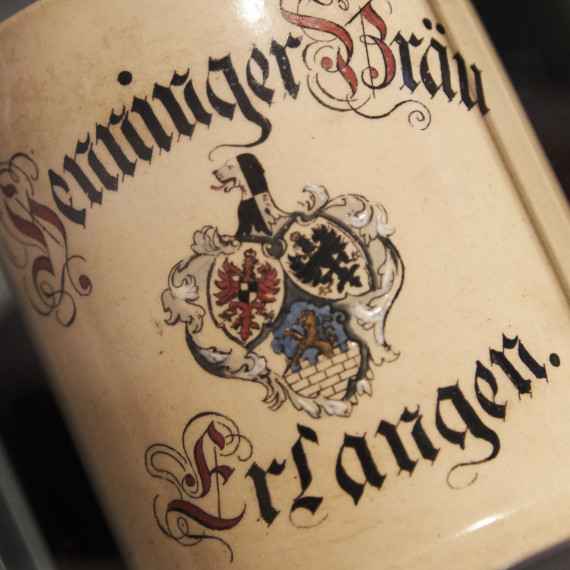The breweries

Around the middle of the 19th century, Erlangen developed into Bavaria's most important beer brewing centre. The boom in the brewing trade began with the founding of the Deutscher Zollverein (German Customs Union) in 1834 and the establishment of the railways. Erlangen was conveniently located along the Munich–Nuremberg–Leipzig–Berlin railway, which became a continuous line in 1851. This expansion of sales markets accelerated the transition from artisanal to industrialised modes of production. As early as 1853, the first Erlangen brewery introduced steam power.
Erlangen's brewery trade reached the peak of its development between 1860 and 1880. At that time, 17 brewing sites existed in the town – most of which were, however, of local significance only. Four breweries accounted for almost 95 percent of beer exports. These four large export breweries shipped their beer to northern Germany, Switzerland, France, Spain, England, and Scandinavia, and even to North and South America, as well as to Australia.
After 1880, the star of this 'Beer City' began to fade. Erlangen's beer exports were surpassed by those from Kulmbach, Nuremberg, and Munich, and a boom in the northern German brewing industry also cost it market share. Only four Erlangen breweries survived the First World War and the hyperinflation of 1923, and only one of these still exists today.
The Burgberg rock cellars
Erlangen's brewing trade owes a great debt to the rock cellars on the Burgberg ('castle hill'). They made it possible to store the beer over the summer season, and they preserved the ice that was used to cool down the wort during the warmer months. They also contributed to the fact that an annual Whitsunday fair on the hillside developed into one of the most traditional southern German beer festivals, the Erlanger Bergkirchweih ('Erlangen Parish Ale on the Hill').
The altogether 16 rock cellars still form an extensive network of tunnels under the Burgberg today. It is thought that the oldest of the cellars was constructed in 1675. Until 1770, twelve more were created, but they did not yet extend very far into the hillside at that time.
The largest rock cellar was constructed over a 15-month period in 1883/84 at the behest of the Reif brewery. It was 861 metres long and contained many ice pits, which were used to store ice during the winter. However, this underground system very soon became obsolete when the brewery acquired cooling machines in the early 1890s.
< Previous chapter | Next chapter >
